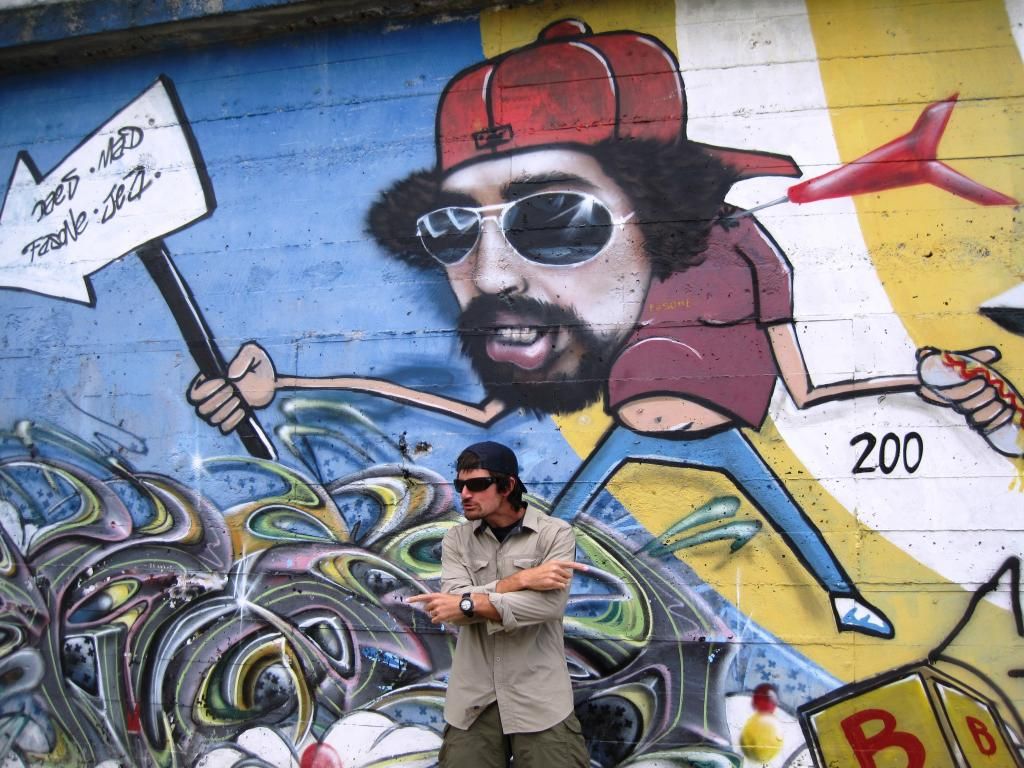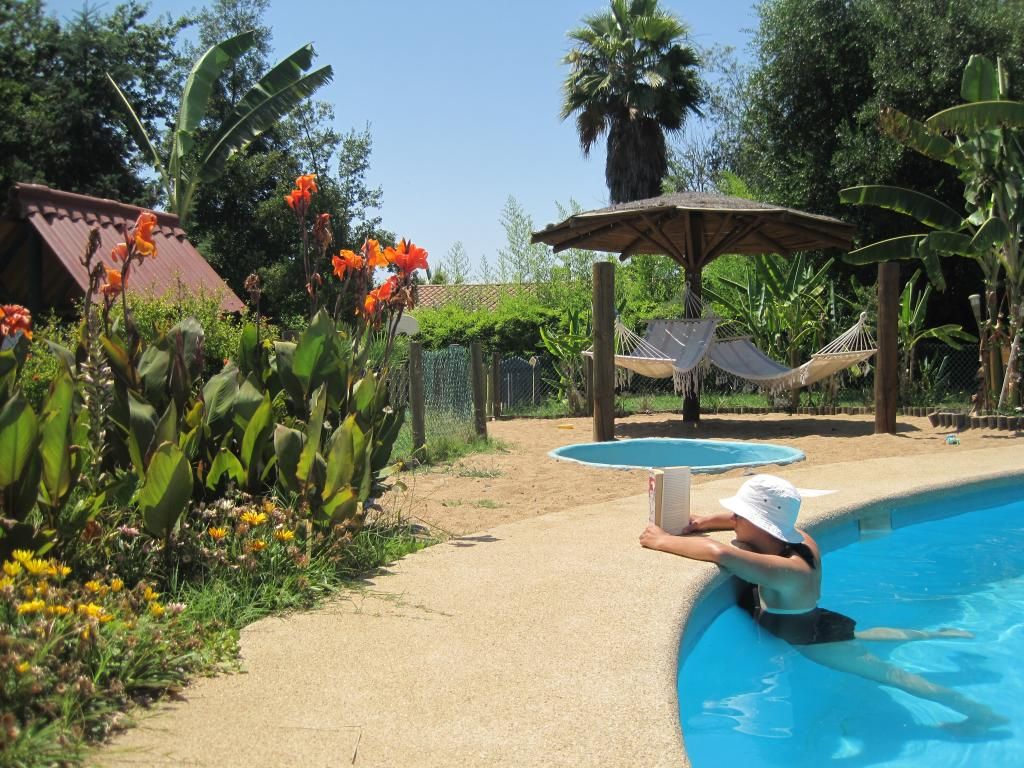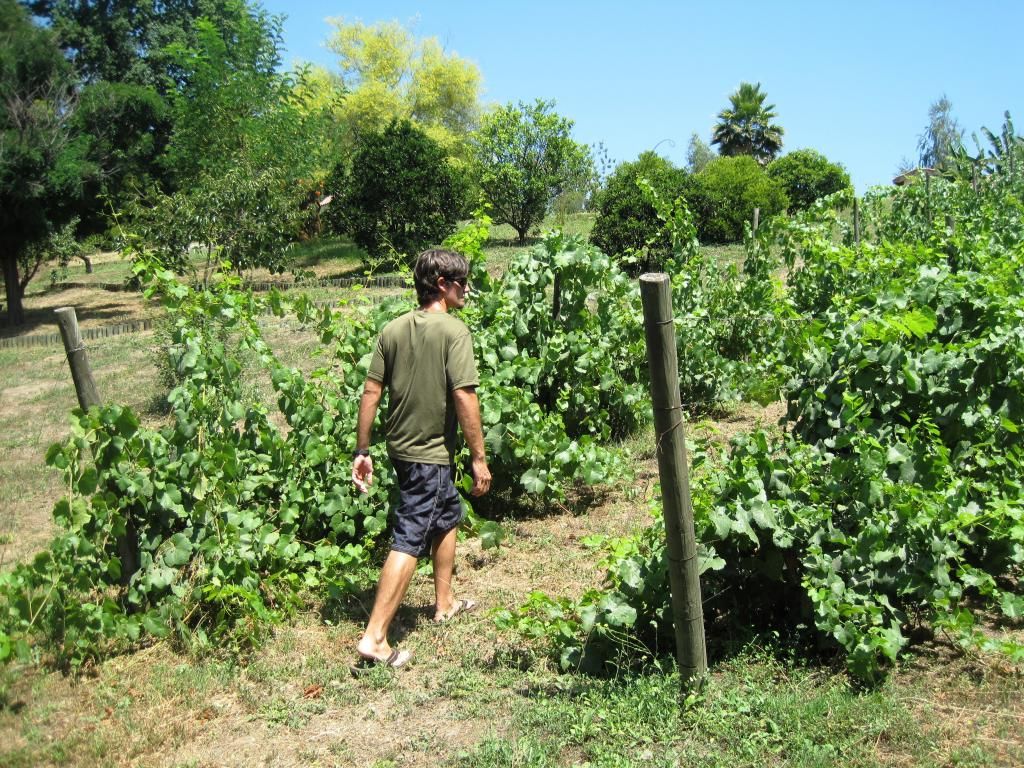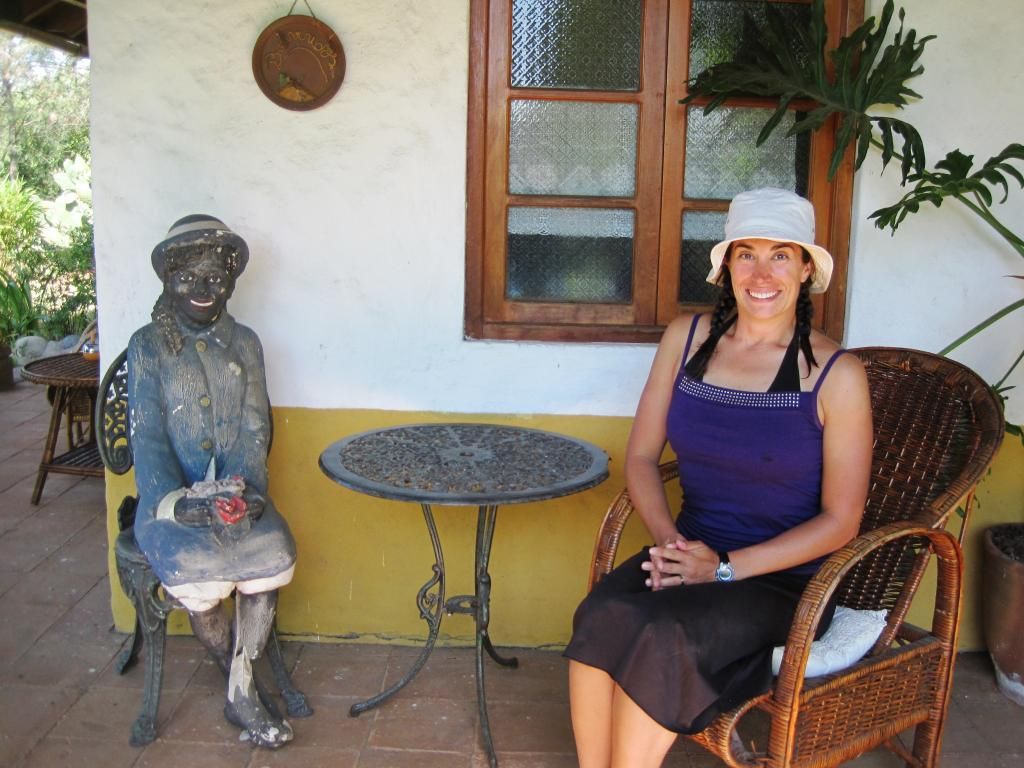A Break From the Road
PUERTO MONTT/TALCA, CHILE: January 14-19
Leah: Bring on the joy, energy, good food, comfy
beds and street vendors---we’re in Chile! Crossing the border had us in a state
of happy delirium, which was further augmented by giggling at the antics of the
friendly yellow lab who was on duty to sniff out produce, dairy and animal/wood
products. Standing in lines with the other bus passengers and having our
luggage extensively searched seemed a small inconvenience if it meant entering
this topographically astounding and in every way diverse country we’d heard so
much about. If you’ve been following the blog, you’re well aware that Argentina
was a struggle for us at times and one we slogged through for 2 months due to pre–existing
plans we couldn’t easily change. Once we crossed the border on our 8 hour bus
ride from Bariloche, it felt like a weight had been lifted and our spirits
cleansed.
We chose Puerto Montt as the first stop on our Chilean
excursion due to the proximity to water (sits right on an ocean bay),
manageable size (population: 180,000), scenery (volcanoes everywhere) and
logistics (major transport hub). Steve had pre-booked our lodging for the
evening given our arrival time of close to 10 p.m.; as we made our way through
the quickening descent of darkness up hills and down winding roads that swiftly
brought us to a vantage point over the city, we reveled in how different it all
felt here.
Granted, we were in a port city and from my time on Semester at Sea, I know that ports tend to be a little grittier and urban than
the average city. However, it felt like we were back in Central America, or at
least northern South America, and we hadn’t realized just how much we had
missed it all. Locals appeared darker in both skin and hair tone, dilapidated
and weathered wooden-shingled houses nestled against bars with gaudy
advertisements featuring scantily-clad ladies and ubiquitous street vendors
hawked everything from wheelbarrows full of fresh cilantro to gaudy beach
towels and cartons of picture-perfect raspberries. We instantly felt comfortable
and at ease with this interesting new locale and our love affair with Chile was
born.
Steve: I won’t
beat a dead horse here—Argentina was rough at times and might not have been all
that we expected but it was also filled with good people, beautiful scenery and
lasting memories. However crossing into Chile brought us back to basics and
reminded us of some of the things we missed, cross-walks and pedestrians having
the right-of-way for starters. Seriously. Cars stop for pedestrians here…we no
longer felt like we were frogs in a game of Frogger. And as much as I love
meat, it is nice having veggies options for your meals. That’s right I said it,
because you can have too much of a good thing.
Um, what else…oh buses. They’re still nicer than most buses
we’ve taken in South America but they’re up to 75% cheaper for similar
distances in Argentina. I refuse to dwell on the what-ifs or should-haves but
we definitely could have stretched our dollars by spending more time in Chile
than what we had previously allotted. The scenery thus far has been out of a
fairytale book and we’ve only seen a tiny fraction of the country.
Lastly, there seems to be a general down-to-earthness
emanating from the people in Chile. I can’t stress enough how honestly grateful
we were to have crossed paths with the people we did in Argentina—Lucho, Johnny
and Claudia, Fede, Leo, and our hitchhiking commandants to name a few—but there
is a different air from the people in Chile. They are less concerned with the
fact that they are really Italians or Spaniards living in South America (truth
be told, Chileans seem to be a mix of German, Spanish and the indigenous, with
a heavier dose of the latter). Chile seems to have some of the class of
Argentina but more of the customs and way of life that we saw in Ecuador, Peru
and Bolivia. But this is just one (or two) American’s perspective and right or
wrong, it’s just what I’ve seen.
Leah: We’d be
resting our heads for the next 3 nights at Hospedaje Corina, a
phenomenal family-run guesthouse that
Steve found online. For 10,000 pesos each ($21.14), we scored a private room in
a pristine 7 bedroom home that appeared to cater more to the local travel crowd
than our fellow backpackers. The room and bathroom were spotless, the common
areas cozy and the included breakfast heaps ahead of most places in Argentina
(cheese, homemade jam, yogurt!). We had a corner room, so not only could we
enjoy an undisturbed and quiet sleep, but the two sets of windows opened onto a
view of the entire downtown and port area, where we could salute the sun over
the volcanoes in the morning and watch the ships come in to dock. And then
there were the pillows---brand new thick memory foam and like manna from Heaven
after some of the shredded and lumpy Styrofoam versions we’ve suffered through
in the past. What a welcome to our final stop in South America!
Our days were blessed with sun, a brisk breeze and plenty to
see and do. Puerto Montt, capital of the Lake District in Chile, sprang up in
demands to the salmon farming industry and also remains a jumping off point for
travelers to the southern Patagonia region. There’s also a heavy German settler
influence in this part of the country, so we saw plenty of German flags,
restaurants and organizations on our strolls though the relatively small
downtown area. When we weren’t buying $5 cans of refried beans to slather on
tortillas (worth every damn penny), getting
creeped out by the giant couple statue or popping into kitschy
discount stores selling everything made in China, we walked a few kilometers
outside of town and past artisan stalls to a small fishing hamlet, Angelmo. We
even found a wall mural that eerily resembled my dear husband and had to snap a
pic with him in front.
Salmon the size of a
middle schooler, fresh and slimy undersea delicacies and seafood empanadas
assailed our senses as we took in the frenzied scene of vendors unloading their
catch, while locals made a few bucks ferrying people to and from Tenglo Island
in their barely water-worthy dinghies. We also noticed that we seemed to be the
only gringos around; there were hordes of tourists, but they all seemed to be
South Americans on their family summer vacations. Keen to see a bit more of the
Lake District, we also took a day trip to Puerto Varas, a tiny town on the edge
of Lake Llanquihue and a perfectly delightful way to spend an afternoon, even
if it was a bit chilly.
There was so much that we wanted to do here and yet again,
if we could go back and allocate our time differently, we could have easily
spent weeks dipping in and out of the adorable towns, hiking the lakes and
gaping at the sugar-dusted volcanoes. However, our time in South America was
drawing to a close and we had a few more days until we had to reach our
Workaway, so we bid "Auf wiedersehen" to Puerto Montt and everything that made it
wonderfully rough around the edges as we hopped a bus north.
Talca (10 hours to the north in Chilean wine country) seemed
like a good spot to rest up for a few days and it was also close to San
Fernando, where our next Workaway opportunity awaited us. It’s not exactly a
bumping spot on the backpacker trail and not only did our guide book not
proffer a city map, but there seemed to be a dearth of hostels, even when we
searched online. Steve again took the reins and had fired off a request to Casa Chueca, one of two places we could find that seemed to be a bit remote but also
one of our only options. After our overnight bus plopped us in Talca on its way
to Santiago, we had to call the lodge to let them know we’d be arriving shortly
so they’d be ready to pick us up. A few questions and street corners later, we
boarded another bus that took us 15 minutes outside Talca to the small area
known as San Valentin (really just a crossroads with several vineyards and
farms). From there a driver from the lodge met us and then drove us several
more dusty kilometers to our destination, which reminded us all too much of
southern California in the summer.
And destination it was! We still paid 10,000 pesos each for
beds in a dorm, but we lucked out and had the dorm (and ensuite bathroom) all
to ourselves, although it was more like a cabin. Exposed wood beam ceilings,
adobe walls washed in green paint and scattered with colorful glass blocks,
local art and framed Pablo Neruda poetry greeted us when we dumped our
backpacks on the stone tile floor. Hello tranquil retreat! And the property
itself was a masterpiece of edible landscaping, welcome amenities, postcard
vistas, furry animals and architecture that blended seamlessly with the
surroundings. Our first survey of the vast property produced a tree house, bell-adorned
goats, vegetable garden, creaking suspension bridge over the river, ponies,
gym, garden-fringed pool and a go-kart course that could also be used as a
running track. Seriously?! Oh, and then there were the trees dripping with tiny
burgundy red and sunflower yellow plums that burst into a spray of perfectly
ripe pulpy flavor the second they hit our tongues. Several times a day we found
ourselves at these trees stuffing our mouths (and pockets) full of nature’s
candy until we suffered stomachaches and sticky fingers. It would have been
even worse, but the pears, peaches and apples weren’t ready yet.
Our two day sojourn here passed quickly with lots of pool
lounging, walks through the grounds, reading, petting the resident border
collie (who liked to herd the pet goats) and scrumptious (vegetarian!) food. I
even learned to my dismay at the age of 31 how kiwi fruit grows---it reminded
me of the infamous Peace Corps pineapple scandal of 2003 where my ignorance in
regards to my food origins reared its ugly head. If you’ve never seen a kiwi in
the wild and without Googling the answer, can you tell me how they grow? Color
me embarrassed (and uninformed). We also shared meals with travelers from
around the world, including an English foundation worker stationed in east
Africa, scores of German/Austrian families with their young children and a
retired American couple from Connecticut, the husband having dealt with 3
failed knee replacement surgeries. But perhaps our favorite was Sally, a feisty
travel-addicted jumbo jet pilot with Virgin Atlantic who’s always scheming away
to plan her next global adventure.
During dinner while we all swapped stories and after
everyone heard about our trip, Sally asked, “What’s the biggest thing that’s
changed in your head during your travels?” I sat there stumped. We were used to
answering questions about our favorite country (Ecuador), craziest border
crossings (Nicaragua sand truck) and tastiest food (potato rellenos in El Salvador, although there are many close seconds) and other generic but
amusing queries. However, as much as Steve and I constantly talk to each other
and other travelers, I don’t know if I’ve ever taken a step back and pondered
this particular question. I gave an inadequate off-the-cuff answer but later
told Sally I would be thinking further on it until I had an answer the that sat
right with me. Before leaving she shared her contact info and told us that she
would enjoy seeing us in England and that even if she were flying or traveling,
we were welcome to her 4 bedroom home because she believes in paying it
forward. This, dear reader, is the kind of fellow traveler we’ve met more often
than not on our meanderings, but that never renders it any less touching.
Our time in both Puerto Montt and Talca flew by all too
quickly, yet afforded us a much welcomed slower pace of travel and plenty of
nature and laid back experiences to help us mellow out. It was also a pleasant change
to be surrounded by people other than backpackers in environments that didn’t
resemble hostels-sometimes you just need a break from the norm! We highly
recommend both spots and hope to return in the future, maybe as part of our
voyage to The Place That Shall not be Named!
CLICK FOR PUERTO MONTT PICTURES, CLICK FOR TALCA PICTURES.






Comments
Post a Comment